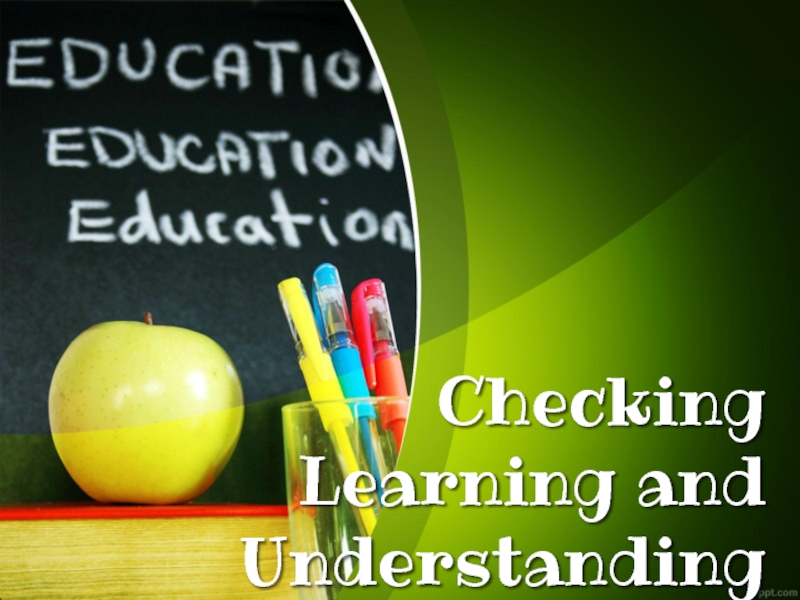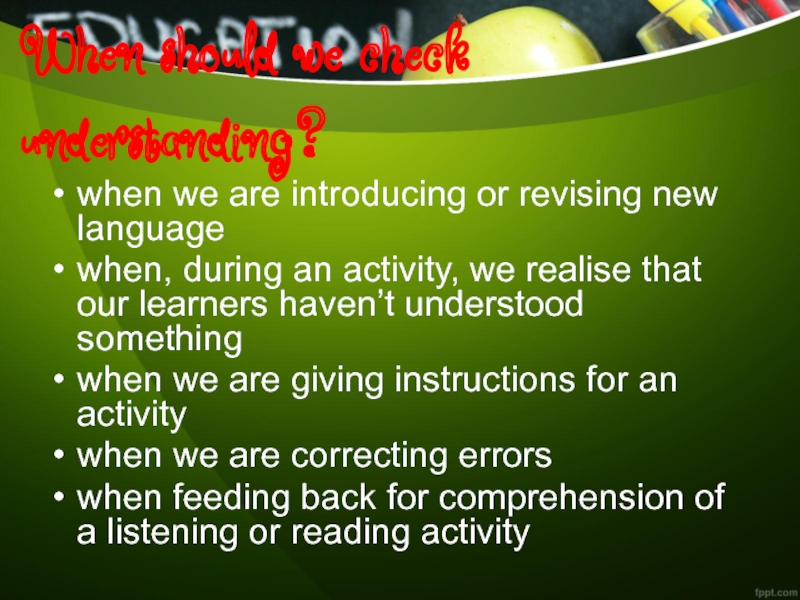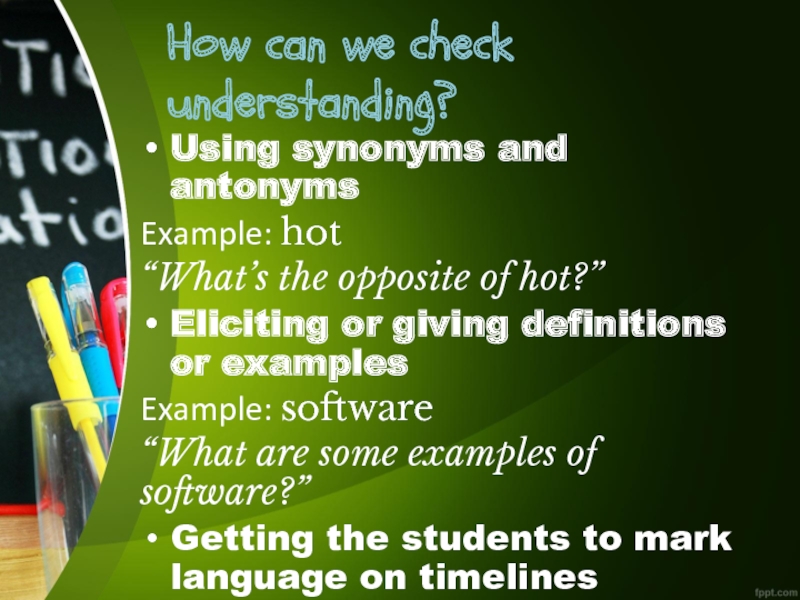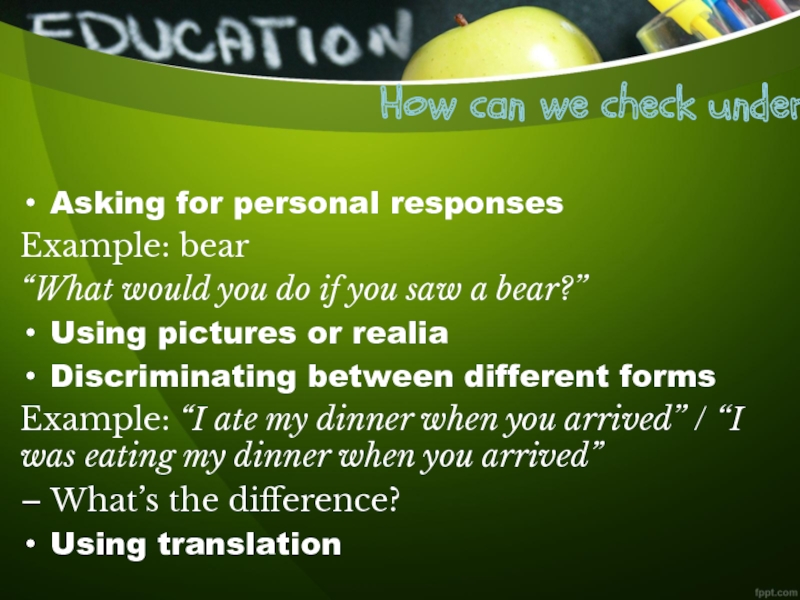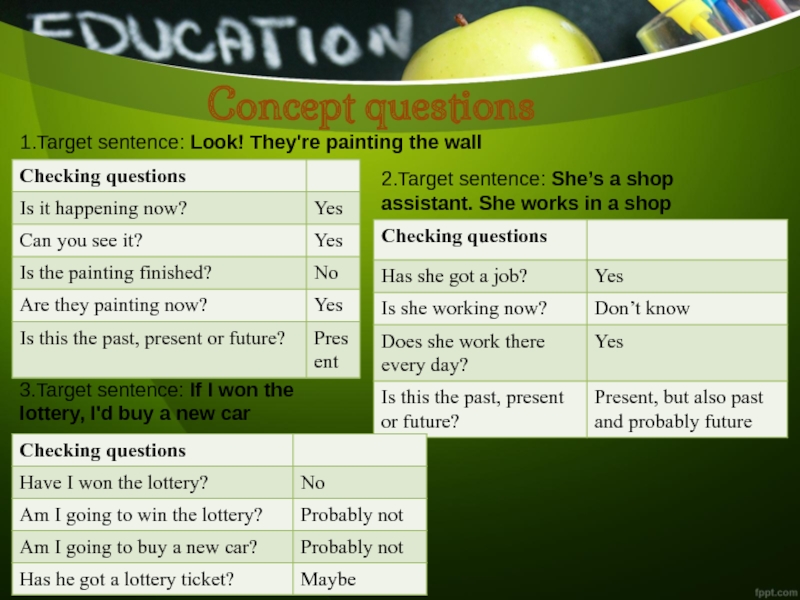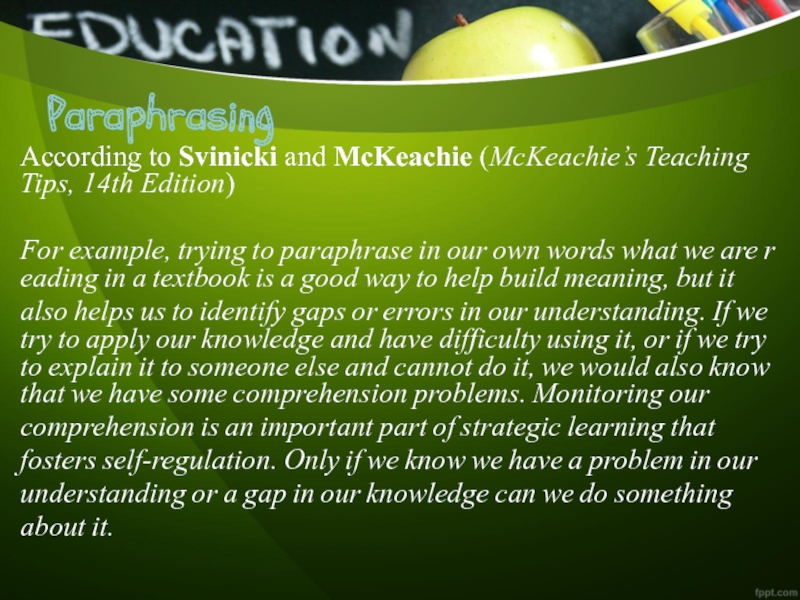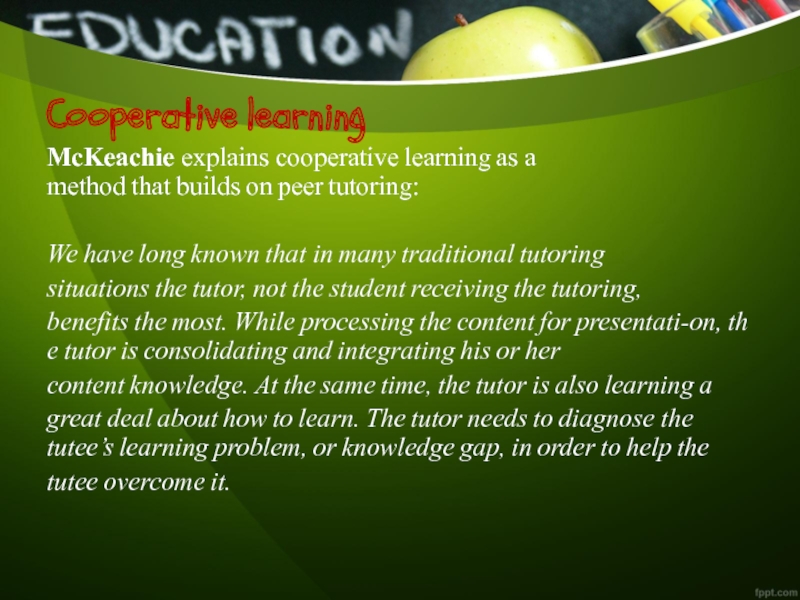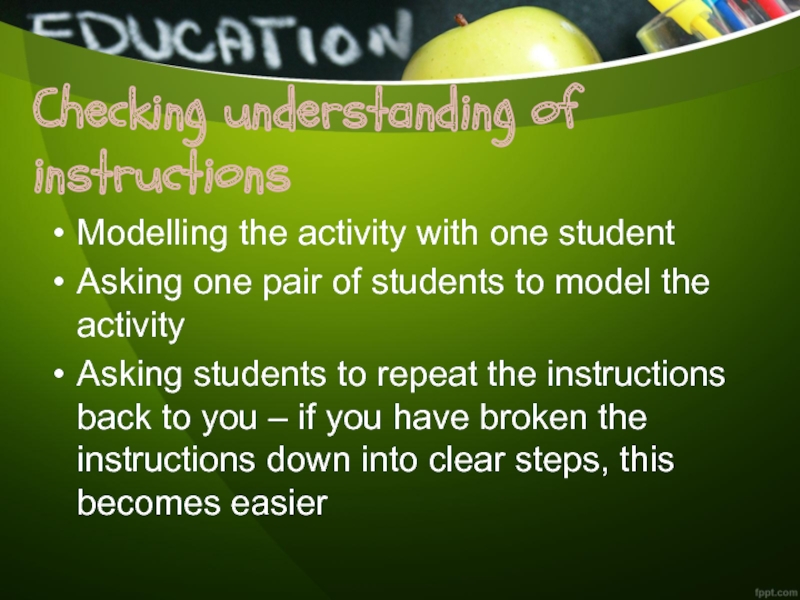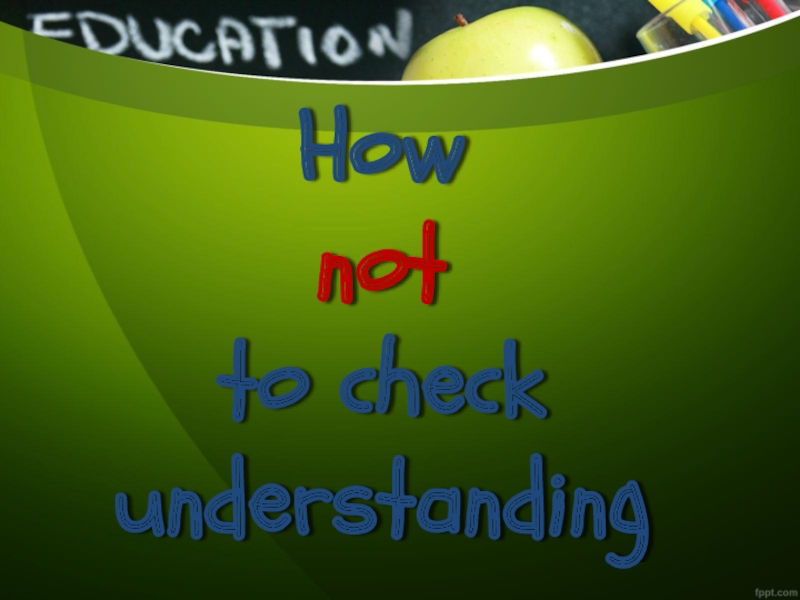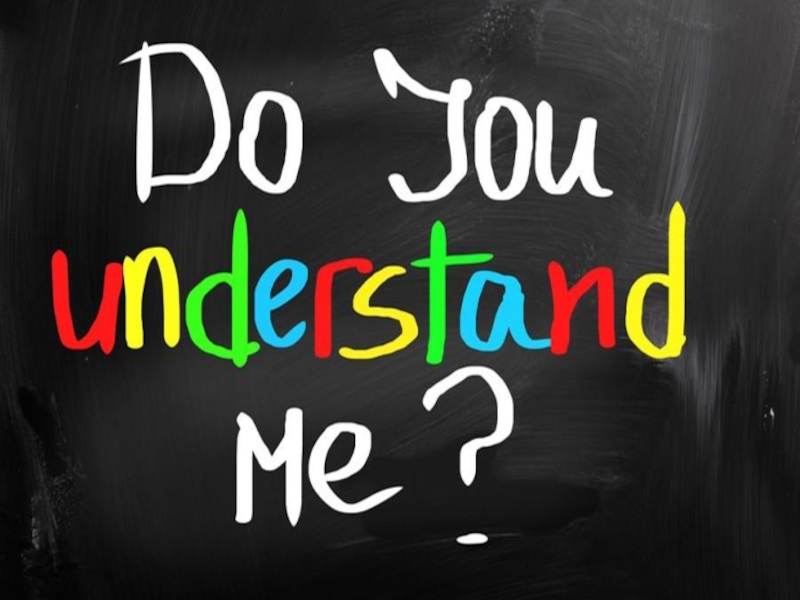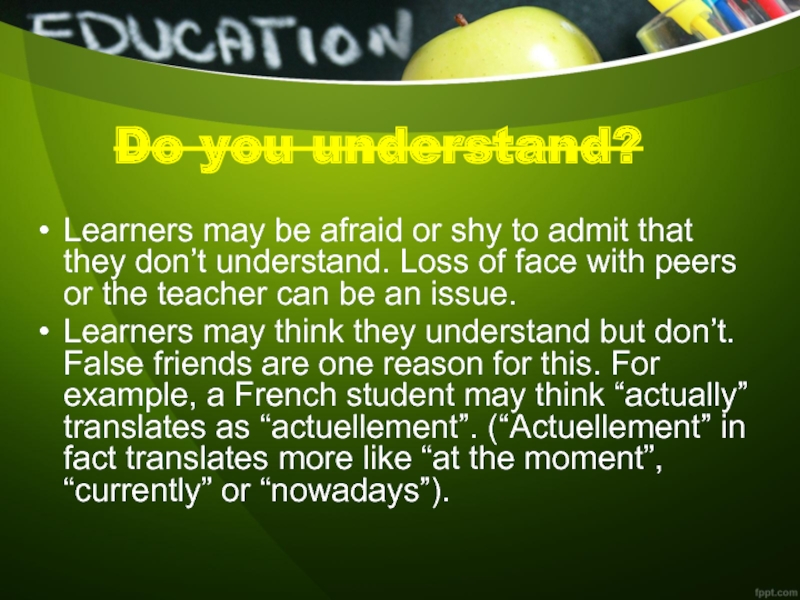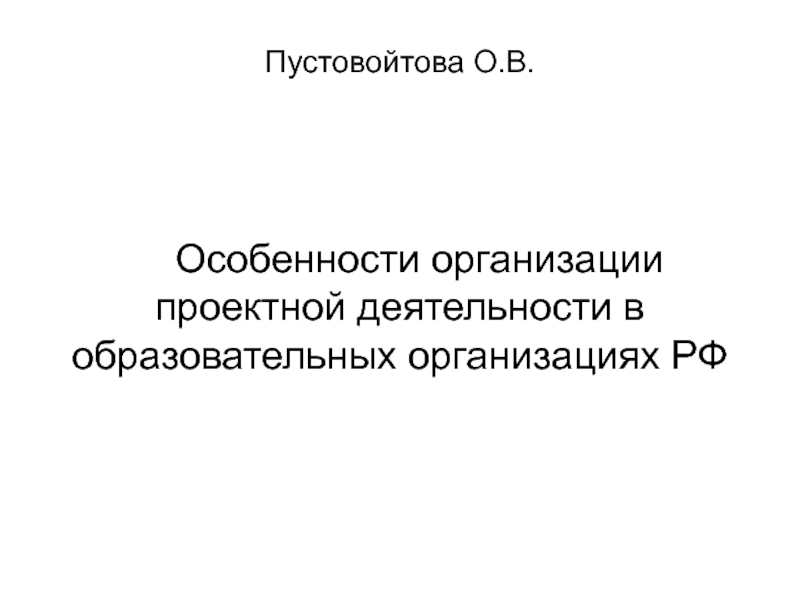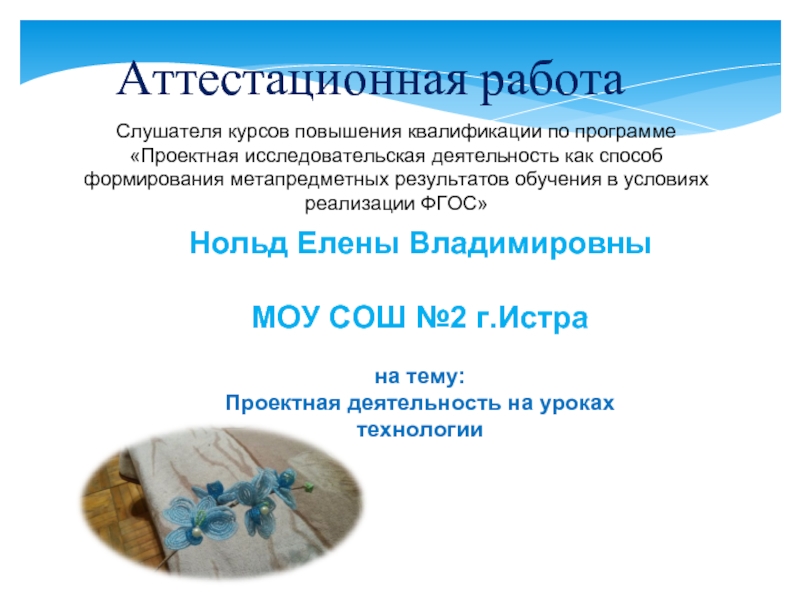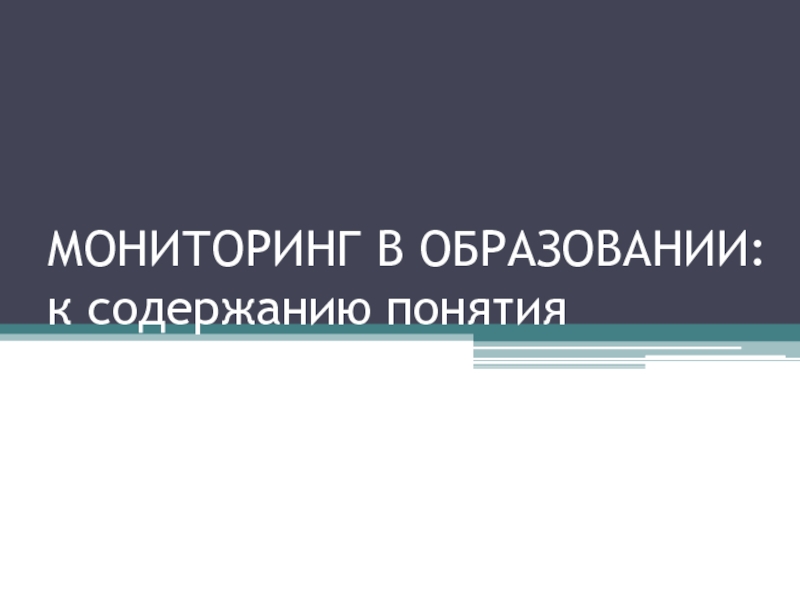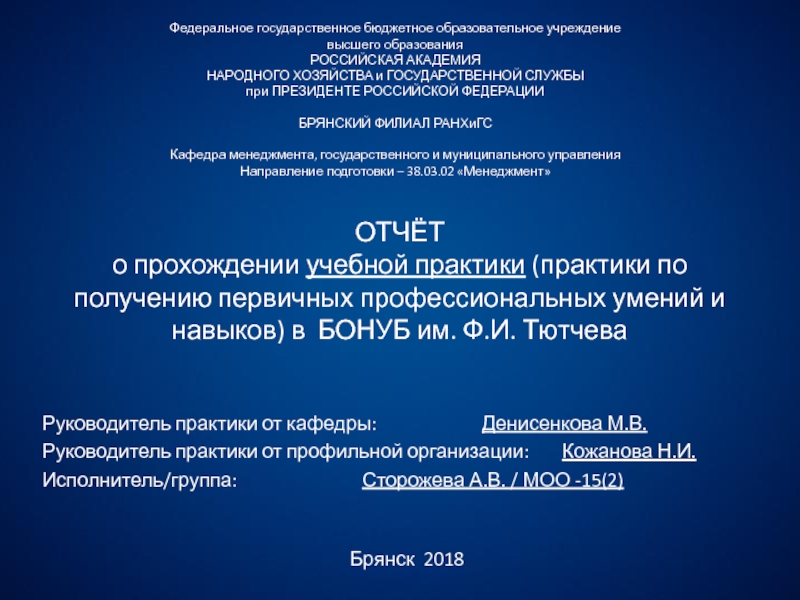- Главная
- Разное
- Дизайн
- Бизнес и предпринимательство
- Аналитика
- Образование
- Развлечения
- Красота и здоровье
- Финансы
- Государство
- Путешествия
- Спорт
- Недвижимость
- Армия
- Графика
- Культурология
- Еда и кулинария
- Лингвистика
- Английский язык
- Астрономия
- Алгебра
- Биология
- География
- Детские презентации
- Информатика
- История
- Литература
- Маркетинг
- Математика
- Медицина
- Менеджмент
- Музыка
- МХК
- Немецкий язык
- ОБЖ
- Обществознание
- Окружающий мир
- Педагогика
- Русский язык
- Технология
- Физика
- Философия
- Химия
- Шаблоны, картинки для презентаций
- Экология
- Экономика
- Юриспруденция
Checking Learning and Understanding презентация
Содержание
- 1. Checking Learning and Understanding
- 2. When should we check understanding? when
- 3. How can we check understanding? Using synonyms
- 4. Asking for personal responses Example: bear “What
- 5. Concept questions 1.Target sentence: Look! They're painting
- 6. Paraphrasing According to Svinicki and McKeachie (McKeachie’s
- 7. Cooperative learning McKeachie explains cooperative learning as a method that builds on peer tutoring:
- 8. Checking understanding of instructions Modelling the activity
- 9. How not to check understanding
- 11. Learners may be afraid or shy
Слайд 2When should we check understanding?
when we are introducing or revising new
language
when, during an activity, we realise that our learners haven’t understood something
when we are giving instructions for an activity
when we are correcting errors
when feeding back for comprehension of a listening or reading activity
when, during an activity, we realise that our learners haven’t understood something
when we are giving instructions for an activity
when we are correcting errors
when feeding back for comprehension of a listening or reading activity
Слайд 3How can we check understanding?
Using synonyms and antonyms
Example: hot
“What’s the opposite
of hot?”
Eliciting or giving definitions or examples
Example: software
“What are some examples of software?”
Getting the students to mark language on timelines
Eliciting or giving definitions or examples
Example: software
“What are some examples of software?”
Getting the students to mark language on timelines
Слайд 4Asking for personal responses
Example: bear
“What would you do if you saw
a bear?”
Using pictures or realia
Discriminating between different forms
Example: “I ate my dinner when you arrived” / “I was eating my dinner when you arrived”
– What’s the difference?
Using translation
Using pictures or realia
Discriminating between different forms
Example: “I ate my dinner when you arrived” / “I was eating my dinner when you arrived”
– What’s the difference?
Using translation
How can we check understanding?
Слайд 5Concept questions
1.Target sentence: Look! They're painting the wall
2.Target sentence: She’s a
shop assistant. She works in a shop
3.Target sentence: If I won the lottery, I'd buy a new car
Слайд 6Paraphrasing
According to Svinicki and McKeachie (McKeachie’s Teaching Tips, 14th Edition)
For example, trying to paraphrase in our own words what we are reading in a textbook is a good way to help build meaning, but it
also helps us to identify gaps or errors in our understanding. If we try to apply our knowledge and have difficulty using it, or if we try to explain it to someone else and cannot do it, we would also know that we have some comprehension problems. Monitoring our
comprehension is an important part of strategic learning that
fosters self-regulation. Only if we know we have a problem in our
understanding or a gap in our knowledge can we do something
about it.
Слайд 7Cooperative learning
McKeachie explains cooperative learning as a method that builds on peer tutoring:
We have long known that in many traditional tutoring
situations the tutor, not the student receiving the tutoring,
benefits the most. While processing the content for presentati-on, the tutor is consolidating and integrating his or her
content knowledge. At the same time, the tutor is also learning a
great deal about how to learn. The tutor needs to diagnose the tutee’s learning problem, or knowledge gap, in order to help the
tutee overcome it.
Слайд 8Checking understanding of instructions
Modelling the activity with one student
Asking one pair
of students to model the activity
Asking students to repeat the instructions back to you – if you have broken the instructions down into clear steps, this becomes easier
Asking students to repeat the instructions back to you – if you have broken the instructions down into clear steps, this becomes easier
Слайд 11
Learners may be afraid or shy to admit that they don’t
understand. Loss of face with peers or the teacher can be an issue.
Learners may think they understand but don’t. False friends are one reason for this. For example, a French student may think “actually” translates as “actuellement”. (“Actuellement” in fact translates more like “at the moment”, “currently” or “nowadays”).
Learners may think they understand but don’t. False friends are one reason for this. For example, a French student may think “actually” translates as “actuellement”. (“Actuellement” in fact translates more like “at the moment”, “currently” or “nowadays”).
Do you understand?
